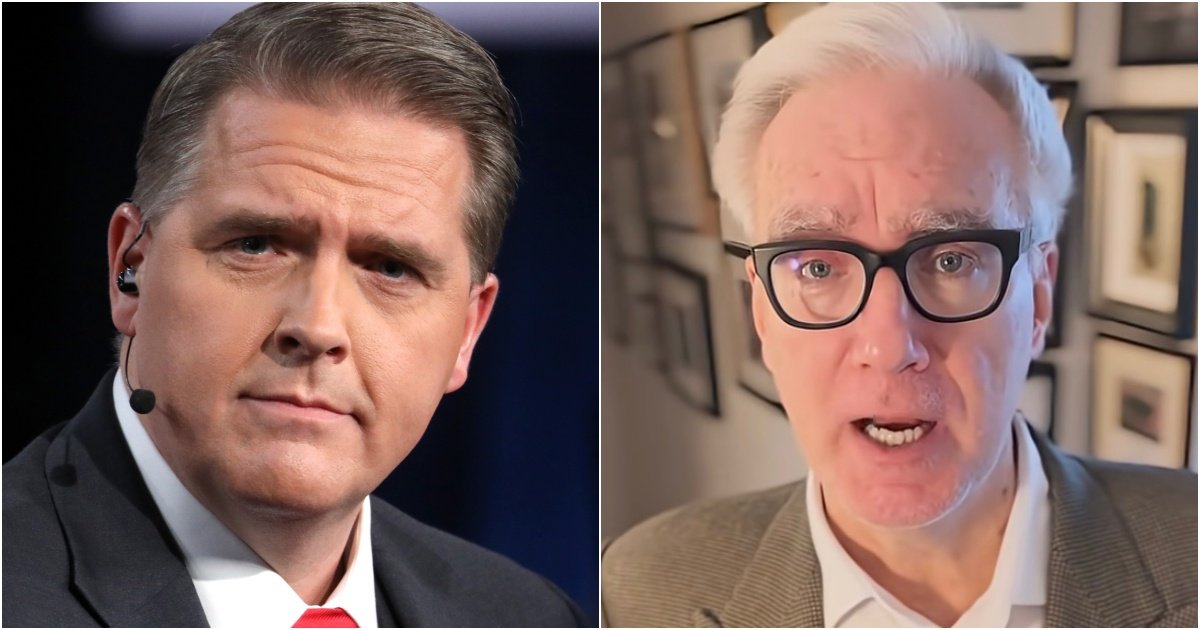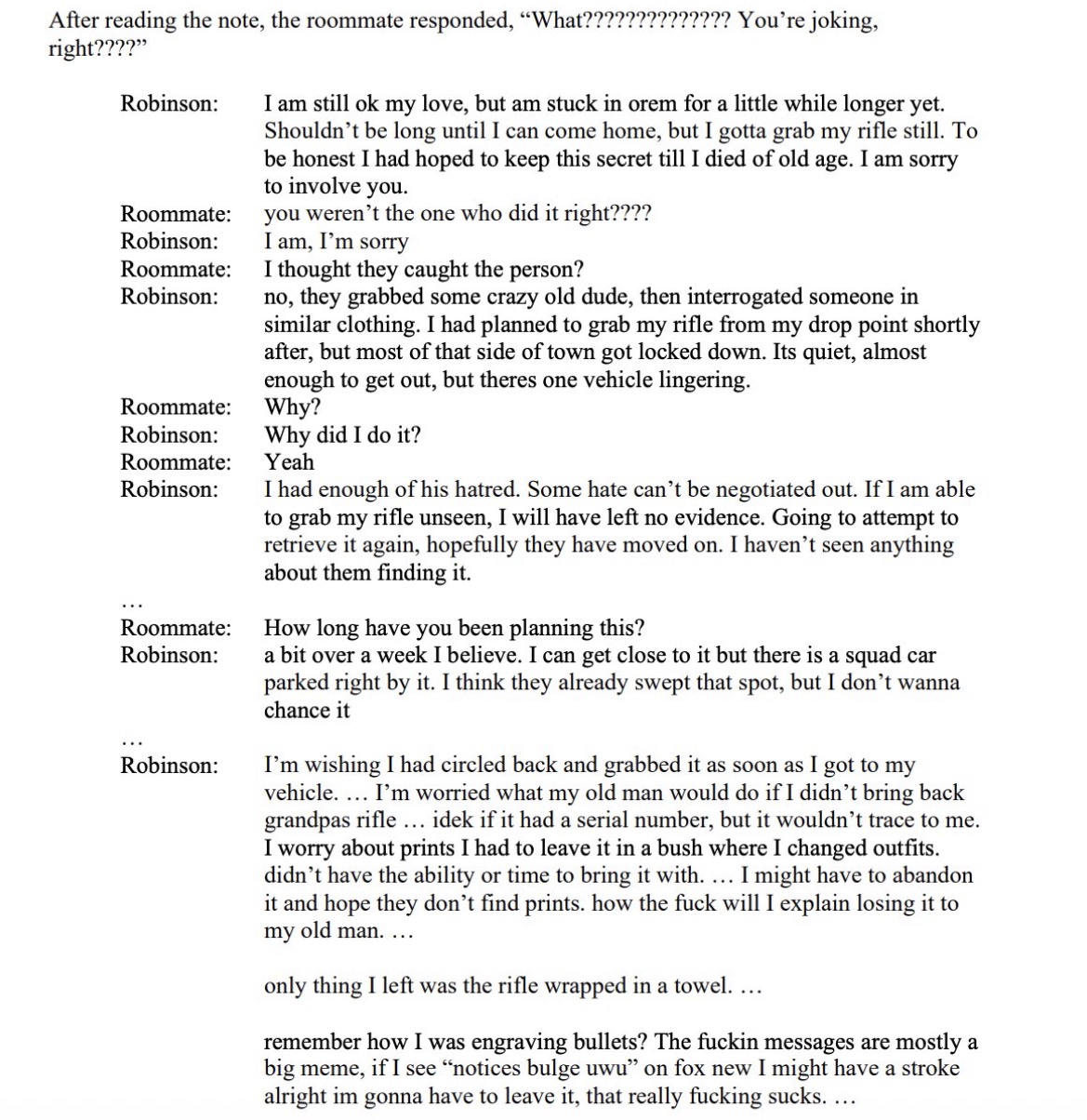| What: | The creation of the Defense Innovation Unit |
| When: | Defense Secretary Ash Carter launched the organization as the Defense Innovation Unit Experimental, or DIUx, in 2015. |
| Why it matters: | The creation of the DIU marked a pivotal shift in how the Pentagon approached innovation. |
Politics
A look back at the origins of DIU


In a 2001 paper, Ashton Carter, then a professor at Harvard, wrote about how commercial technology would play a decisive role in deterring and prevailing in conflict. Carter warned the U.S military must become adept at rapidly integrating commercial innovations into its operations — or a technological revolution that began in the Defense Department would quickly pass it by.
In the years to follow, Silicon Valley surged ahead, driving technological advancements across various sectors, while the military continued to fall further behind due to outdated procurement processes, bureaucratic hurdles and cultural resistance, among other factors.
“It was as if the military had resigned itself to becoming a display in the Museum of Computer History,” Raj Shah and Christopher Kirchhoff wrote in “Unit X.” “You could visit an Army, Air Force or [a] naval base to see what people used in the past, then go to Best Buy to see how far technology had evolved.”
Carter saw it in 2001 — the Defense Department needed to become “the world’s fastest adapter and adopter of commercial technology into defense systems”— and nearly 15 years later, shortly after becoming Defense secretary in 2015, he created the Defense Innovation Unit Experimental (DIUx).
“There’s a lot of people with a lot of visions and ideas. There’s very few that know how to execute — and Secretary Ash Carter knew both. He had a vision; he had the knowledge and the wherewithal to actually get anything done. It was his brainchild, and he made it come together and fought all the bureaucrats and pivoted the department,” Shah, who was one of the DIUx’s early leaders, told Federal News Network.
Carter’s vision for DIUx was to create a bridge between the Pentagon and the commercial technology sector — using funding to quickly buy existing products, help companies develop new ones and leverage venture capital to grow a broader ecosystem of firms serving the Defense Department.
The organization had a rocky start, but when Carter asked Shah and Kirchhoff to lead the unit, the pair created a whole list of things they thought they needed to get the unit off the ground. They wanted the unit to report directly to the secretary, instead of being buried in layers of the Pentagon hierarchy. They wanted Carter to assign one of his special assistants to the unit. If the unit asked other parts of the military for help, they were expected to comply. The unit could request a policy waiver should it get in the way. And the unit would oversee its own budget and staffing.
The early days of DIUx were challenging — there were budget troubles, and the organization needed a way to buy technology faster.
“I think our strategy was just to prove that we could exist. We went from 8 people to 100 in two years. And one small office to four. We were just trying to stay alive. When I joined the organization, we had zero written contracts, so we had to build a whole contracting apparatus and system,” Shah said.
“I think the biggest battles in government outside the Pentagon were all budget battles with the Office of Management and Budget and Congress, trying to defend what we were doing and why we needed our budget. And because it was so high profile, being the Secretary cared about it, a lot of entities would try to use it as leverage. They would hold us hostage to try to extract something, some concession, from the department, and so we would get in the car in the middle of a lot of these fights. It’s very painful,” he added.
Finding a ‘loophole’
The Defense Department has traditionally operated as a monopoly buyer, but when it came to Silicon Valley, the Pentagon wasn’t even a minority buyer. DIUx knew it had to fundamentally rethink how it did business — it needed to become a better customer, be able to move quickly and get companies on contract fast. DIUx knew it had to find an alternative to the traditional acquisition process under the Federal Acquisition Regulations, which can take at least a year to negotiate.
At the same time, the 2016 defense policy bill drastically expanded the DoD’s ability to use Other Transaction Authority (OTA). OTAs have been around for decades, but agencies mostly used it for work with research labs, universities and small businesses to build prototypes.
But the 2016 defense legislation enabled the Defense Department to start using OTAs to not just buy prototypes, but to move from prototype into production.
Lauren Dailey, who was the director of acquisitions at the time, took it a step further by designing a “Commercial Solutions Opening” process, which would let DIUx work directly with commercial companies and buy technology at scale.
One of DIU’s early success stories was with Shield AI, a startup that makes autonomous quadcopters. The company wanted to work with the Defense Department but struggled to raise money since investors did not view DoD as a reliable customer. DIUx, however, liked the technology and brought the company through the CSO process — within about a month, Shield AI received an OTA contract to prototype its technology. The contract then helped unlock private investment in the company.
Michael Brown, who succeeded Shah as DIU director, came in to scale that model.
“We got the transition rate, or the rate from a vendor coming in to compete on a military contract to having a production contract, in half to 50%. It wasn’t surefire, because it wasn’t 100% but you had a very good shot now of getting a production contract if you came in through a DIU process. We introduced over 50 capabilities to DoD and 50 new vendors to DOD. We really expanded on the concept,” Brown told Federal News Network.
During his time as the director, Brown’s team, along with the office of the under secretary for acquisition and sustainment, created an OTA guide to make these authorities more accessible across the acquisition workforce. The guide helped clarify not only how OTAs work, but also what their limits are.
In addition, the organization launched the Immersive Commercial Acquisition Program, a yearlong rotational initiative that embedded acquisition professionals from each military service inside DIU. The goal was to cultivate a new cadre of acquisition experts equipped with practical experience in non-traditional contracting. Plus, the Defense Acquisition University introduced specialized training programs to teach the fundamentals of OTAs.
Brown said while the combination of those efforts yielded some positive results, it is nothing like Defense Secretary Pete Hegseth directing the Defense Department to use the Commercial Solutions Openings and Other Transactions as the default contracting approaches for buying capabilities under the software acquisition pathway.
“Now everyone is going to be interested in figuring out, ‘How do I do this?’ That pull effect is going to be very strong. I think that will be the start of a complete change in the order of magnitude of OTAs are being used,” Brown said.
“We’ll start to see a lot more change more quickly. Previously, I would say there was some concern about who all was endorsing the use of the OT versus FAR. If FAR is the way we buy most things and it’s already well understood by the General Councils, by the acquisition officials within the services, OTs would have remained on the fringe. But now there’s an emphasis to go commercial first. So let’s finally start implementing something Congress asked for 20 years ago called modular open system architecture,” he added.
Now, a decade later, DIU has evolved from a small experimental organization into a central player backed by a billion-dollar budget and expanded support from Congress. Plus, in 2016, around the time the CSO process was launched, there was approximately $8 billion in venture capital investment going into companies working on defense technologies. By 2024, the number went up to about $43 billion — a 525% increase.
“I’m disappointed that we still need DIU, that the whole department has not transformed itself into being a very innovative organization. So to that point, I think there’s still a lot of work to be done,” Shah said.
The post A look back at the origins of DIU first appeared on Federal News Network.
Politics
Black Lives Matter Activist in Boston Pleads Guilty to Federal Fraud Charges – Scammed Donors to Fund Her Lifestyle

Screencap of YouTube video.
A Black Lives Matter activist in Boston named Monica Cannon-Grant pleaded guilty to federal charges this week, admitting that she scammed donors and used their money to fund her own lavish lifestyle.
Cannon-Grant was previously held up as an admired figure. The city of Boston named her the Bostonian of the year at one point for her ‘social justice activism’ and she was even recognized by the Boston Celtics basketball team for her efforts.
She is now facing a minimum of two years in prison.
The New York Post reports:
BLM-linked activist admits conning donors to fund her lavish lifestyle
A once-celebrated Boston social activist has pleaded guilty to defrauding donors — including Black Lives Matter — out of thousands of dollars that she used as a personal piggy bank.
Monica Cannon-Grant, 44, pleaded guilty Monday to 18 counts of fraud-related crimes that she committed with her late husband while operating their Violence in Boston (VIB) activists group, according to the US Attorney’s Office in Massachusetts.
The activist scammed money — including $3,000 from a BLM group — while claiming it was to help feed children and run protests like one in 2020 over the murder of George Floyd and police violence.
Cannon-Grant also conned her way into getting $100,000 in federal pandemic-related unemployment benefits — which she used to pay off her personal auto loan and car insurance policy.
But she has now confessed to transferring funds to personal bank accounts to pay for rent, shopping sprees, delivery meals, visits to a nail salon — and even a summer vacation to Maryland.
Just amazing.
Monica Cannon-Grant stole from donors, scammed the government, and lived it up while preaching about oppression. BLM grift is the only nonprofit where fraud is part of the mission statement. https://t.co/ir3q9lqYrh
— Matthew Newgarden (@a_newgarden) September 23, 2025
BREAKING: BLM activist Monica Cannon-Grant pleads guilty to 27 fraud charges, misusing over $1M from Violence in Boston for personal gain. Echoes Sir Maejor Page’s $450K scam conviction. A wake-up call for nonprofit accountability. pic.twitter.com/N9vvD369gB
— (@pr0ud_americans) September 14, 2025
Here’s a local video report:
She should pay back every penny.
The post Black Lives Matter Activist in Boston Pleads Guilty to Federal Fraud Charges – Scammed Donors to Fund Her Lifestyle appeared first on The Gateway Pundit.
Politics
Keith Olbermann Backpedals Furiously With Apology for Threatening CNN’s Scott Jennings – Jennings Responds (VIDEO)

As the Gateway Pundit reported yesterday, former MSNBC host and generally unhinged leftist Keith Olbermann, appeared to threaten CNN’s conservative pundit Scott Jennings on Twitter saying, ‘You’re next motherf**ker.’
Well, Olbermann may have gotten a phone call or a visit from the FBI because today he walked back those comments with a full-throated apology.
RedState has an update:
To quickly recap, Scott Jennings, a Salem Media Network radio host and conservative CNN political commentator, reacted to breaking news on Monday that Kimmel had been reinstated by tweeting, “So basically his employer suspended him for being an insensitive pr**k, and we don’t live in an authoritarian regime? Got it.”
This enraged Olbermann, who proceeded to tweet what many, including Jennings, perceived to be a threat. “You’re next, motherf**ker. But keep mugging to the camera.” Jennings tagged Patel and included a screengrab of the tweets in response.
Though the FBI hasn’t commented as to whether an investigation was launched, Olbermann ostensibly appears to have thought twice about what he tweeted and deleted, apologizing profusely in tweets posted on Tuesday and claiming what he wrote was “misinterpreted”:
See Olbermann’s tweet below:
I apologize without reservation to @ScottJenningsKY
Yesterday I wrote and immediately deleted 2 responses to him about Kimmel because they could be misinterpreted as a threat to anything besides his career. I immediately replaced them with ones specifying what I actually meant. pic.twitter.com/SPWLb73nEk
— Keith Olbermann (@KeithOlbermann) September 23, 2025
I oppose and condemn political violence, and the threat of it. All times are the wrong time to leave even an inadvertent impression of it – but this time is especially wrong
I should've acknowledged the deletion and apologized yesterday. I'm sorry I delayed.
— Keith Olbermann (@KeithOlbermann) September 23, 2025
Scott Jennings, always a class act, offered this hilarious response:
SCOTT JENNINGS: “Marking myself SAFE from that NUT, Keith Olbermann!” pic.twitter.com/EYZX6vm5Oh
— Dustin Grage (@GrageDustin) September 23, 2025
Keith Olbermann really needs help. The guy is just so out of control.
The post Keith Olbermann Backpedals Furiously With Apology for Threatening CNN’s Scott Jennings – Jennings Responds (VIDEO) appeared first on The Gateway Pundit.
Politics
Where is Lance Twiggs? Kirk Assassin’s Transgender Lover Has Vanished

 Charlie Kirk assassin Tyler Robinson and roommate Lance Twiggs
Charlie Kirk assassin Tyler Robinson and roommate Lance Twiggs
Charlie Kirk assassin Tyler Robinson lived with his transgender partner – a male-to-female trans named Lance “Luna” Twiggs.
The FBI used Robinson’s texts with his transgender partner to solidify that Robinson was the assassin. Lance Twiggs has not been charged with any crime; however, federal authorities are still investigating.
Last week, Utah authorities released the text exchange between Tyler Robinson and his transgender lover, Lance Twiggs, sent shortly after Kirk’s assassination.
Utah County District Attorney Jeff Gray announced seven charges against Charlie Kirk assassin Tyler Robinson. They will also be seeking the death penalty.
Robinson was charged with:
– Count 1: Aggravated murder (capital offense)
– Count 2: Felony reckless discharge of a firearm causing bodily injury
– Count 3: Felony obstruction of justice for hiding the firearm
– Count 4: Felony obstruction of justice for discarding the clothing he wore during the shooting
– Count 5: Witness tampering for asking roommate to delete incriminating messages
– Count 6: Witness temperating for demanding trans roommate stay silent, and not speak to police
– Count 7: Commission of a violent offense in the presence of a child
Jeff Gray released the chilling texts between Tyler Robinson and his “love” Lance Twiggs.
Read the text exchange here:
 Tyler Robinson texts with transgender lover Lance Twiggs / 1
Tyler Robinson texts with transgender lover Lance Twiggs / 1
 Kirk assassin Tyler Robinson texts with transgender lover Lance Twiggs / 2
Kirk assassin Tyler Robinson texts with transgender lover Lance Twiggs / 2
Lance Twiggs was reportedly cooperating with the FBI, however, according to the Daily Mail he has seemingly vanished.
“If [Lance Twiggs] ever comes back, it will be in a body bag,” a neighbor said to the Daily Mail. “That’s not a threat – I’m just saying that there are so many people who want a piece of him he’d be mad to show his face in public again. This was a generational event.”
The Daily Mail reported:
The Trans boyfriend of Charlie Kirk’s alleged assassin has fled their former lovenest – and locals tell the Daily Mail they never want to see him again.
Lance Twiggs, 22, was led away for questioning when police swooped on the smart three-bed condo he shared with accused gunman Tyler Robinson, 22.
Shaken neighbors say the part time plumber has not been back to the $320,000 property in St. George, Utah – one declaring: ‘Good riddance. I never want to see either of them again.’
His beaten-up Infinity compact is still parked in his space with his work gear tossed across the back seat and a sandwich wrapper and a drink on the front passenger seat.
Upstairs lights have been left on for more than a week and notes and Amazon packages are piling up outside the home owned by Twiggs’s devout Mormon family.
The post Where is Lance Twiggs? Kirk Assassin’s Transgender Lover Has Vanished appeared first on The Gateway Pundit.
-

 Entertainment6 months ago
Entertainment6 months agoNew Kid and Family Movies in 2025: Calendar of Release Dates (Updating)
-

 Entertainment3 months ago
Entertainment3 months agoBrooklyn Mirage Has Been Quietly Co-Managed by Hedge Fund Manager Axar Capital Amid Reopening Drama
-
Tech6 months ago
The best sexting apps in 2025
-

 Entertainment5 months ago
Entertainment5 months agoKid and Family TV Shows in 2025: New Series & Season Premiere Dates (Updating)
-

 Tech7 months ago
Tech7 months agoEvery potential TikTok buyer we know about
-
Tech7 months ago
iOS 18.4 developer beta released — heres what you can expect
-

 Tech7 months ago
Tech7 months agoAre You an RSSMasher?
-

 Politics7 months ago
Politics7 months agoDOGE-ing toward the best Department of Defense ever



